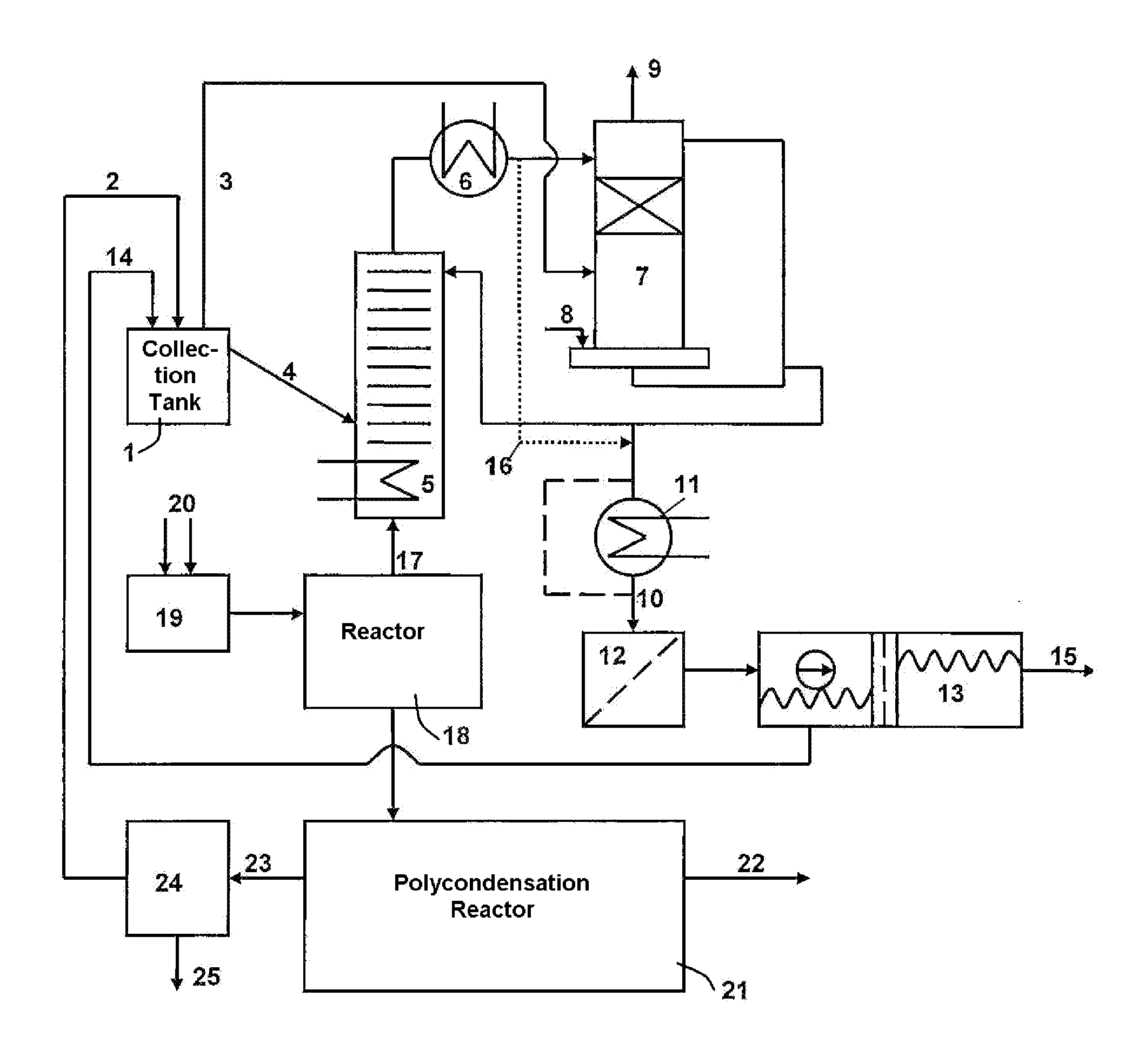Apparatus for the recovery of ethylene glycol in the production of polyethylene terephthalate
a technology of ethylene glycol and ethylene glycol, which is applied in the nature of treatment water, semi-permeable membranes, filtration separation, etc., can solve the problems of relative high loss of eg in the column of pet systems, and achieve the effect of accelerating mdo cleavag
- Summary
- Abstract
- Description
- Claims
- Application Information
AI Technical Summary
Benefits of technology
Problems solved by technology
Method used
Image
Examples
example 2
[0090]The following tables show the material flows in a PET production process, wherein in contrast to the method according to Example 1, the partially purified process wastewater is not stripped after running through the process column (5) and the condenser (6).
[0091]Flow 16 (partially purified wastewater after process column and condenser)
Mass flow (total)2613 kg / hWater with:Ethylene glycol 0.5%2-methyl-1,3 dioxolane0.45%Acetic Acid 0.18%*1,4-dioxane0.05%AcetaldehydeNot relevantTemperature35-45° C.
[0092]Flow 14 (partially purified process wastewater retentate from reverse osmosis)
Mass flow (total)180 kg / hWater with:Ethylene glycol 5.8%2-methyl-1,3 dioxolane 5.5%Acetic Acid 1.3%*1,4-dioxane0.65%AcetaldehydeNot relevantTemperature30-40° C.
[0093]Retention degrees according to reverse osmosis
Ethylene glycol80%2-methyl-1,3 dioxolane85%Acetic Acid50%1,4-dioxane90%AcetaldehydeNot relevant
[0094]Flow 15 (partially purified process wastewater: permeate from reverse osmosis)
Mass flow (total...
PUM
| Property | Measurement | Unit |
|---|---|---|
| pH | aaaaa | aaaaa |
| pressures | aaaaa | aaaaa |
| temperatures | aaaaa | aaaaa |
Abstract
Description
Claims
Application Information
 Login to View More
Login to View More - R&D
- Intellectual Property
- Life Sciences
- Materials
- Tech Scout
- Unparalleled Data Quality
- Higher Quality Content
- 60% Fewer Hallucinations
Browse by: Latest US Patents, China's latest patents, Technical Efficacy Thesaurus, Application Domain, Technology Topic, Popular Technical Reports.
© 2025 PatSnap. All rights reserved.Legal|Privacy policy|Modern Slavery Act Transparency Statement|Sitemap|About US| Contact US: help@patsnap.com

